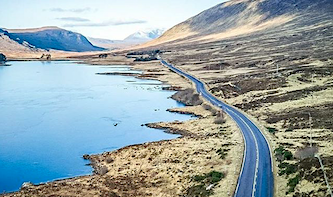Inverness Airport saw a 23.5% increase in passenger numbers in the last financial year – up to 829,018 during 2016-17.
Inverness recorded the highest monthly passenger figures at the airport since it opened in 1940 as RAF Dalcross – more than 93,000 people using the terminal in July.
The airport reported strong growth in its international services — on direct routes to Amsterdam Schipol and Dublin — with international numbers up 64% in the April to July period.
The airport is currently enjoying the longest sustained period of growth in its 77-year history and is on target to deliver record inbound passenger figures estimated to be worth £75 million to the Highland and Islands economy.
Inverness Airport is owned by Highland and Islands Airports Limited (HIAL), a public corporation owned by the Scottish Ministers.
HIAL is headquartered in Inverness and employs about 600 people at Campbeltown, Islay, Tiree, Barra, Benbecula, Stornoway, Sumburgh, Kirkwall, Wick John O’Groats, Inverness and Dundee airports.
HIAL managing director Inglis Lyon said: “Inverness is now better connected than it has even been and this can only be good for the Highlands and Islands economy and Scotland as a whole.
“Our international connections to two of the world’s great hub airports in Amsterdam and London make it easier than ever for people to travel to and from the region …
“Scotland has world-class tourism destinations and many of these can be readily accessed via Inverness – we have some of the country’s best golf courses on our doorstep and the outstanding global reputation of the new North Coast 500 route means people can fly in and begin and end their journey from the Highland capital.
“Given the 23.5% increase in passenger numbers in the last financial year – up to 829,018 during 2016/17 – there can be few other airport facilities in this country growing at that rate and the team at Inverness are to be commended for that achievement.”
HIAL invested £1.85 million in the last two years in passenger facilities at Inverness, including new catering outlets and additional car parking spaces.
Future investment is essential to continue to improve the passenger experience.
Lyon added: “Right now, the 2017-18 figures are on track to deliver 237,000 inbound business and leisure passengers to Inverness, which is worth a conservative £75 million per annum, based on acknowledged visitor spend figures.
“Like other parts of Britain, the Highlands is benefiting from increased visitor numbers as the value of the pound has dropped, making the UK a more attractive holiday destination.
“Inverness is also a viable departure airport for Scottish passengers looking to travel abroad, where once Highlanders would have had to book flights from other Scottish airports, they can now start their journey from the Highland capital, which is increasingly convenient for long haul travel.
“The role of smaller regional airports is having an increasingly important impact on the economies of the areas they support and there is now substantial evidence that enhanced air connectivity, whether for passengers or freight, has a major impact on trade and the opportunities for local businesses.
“Local and regional economies that are well connected by air, operate more productively, have better market access and are more likely to attract inward investment and welcome more overseas tourists. Inverness is a strong example of this and it is clear the figures we are witnessing at the moment are a real testament to the vision the HIAL Board has for the future.”
Scottish Government Minister for Transport and the Islands Humza Yousaf said: “The launch of additional services to Amsterdam and London is really paying dividends, and this improved connectivity is supporting both our tourism sector and Scottish businesses looking for better access to global markets.
“There is no doubt Inverness Airport plays an important role for the local and national economies and I congratulate everyone involved for their efforts.
“We look forward to working with HIAL to build on this success, with new routes and more capacity on existing routes.”
